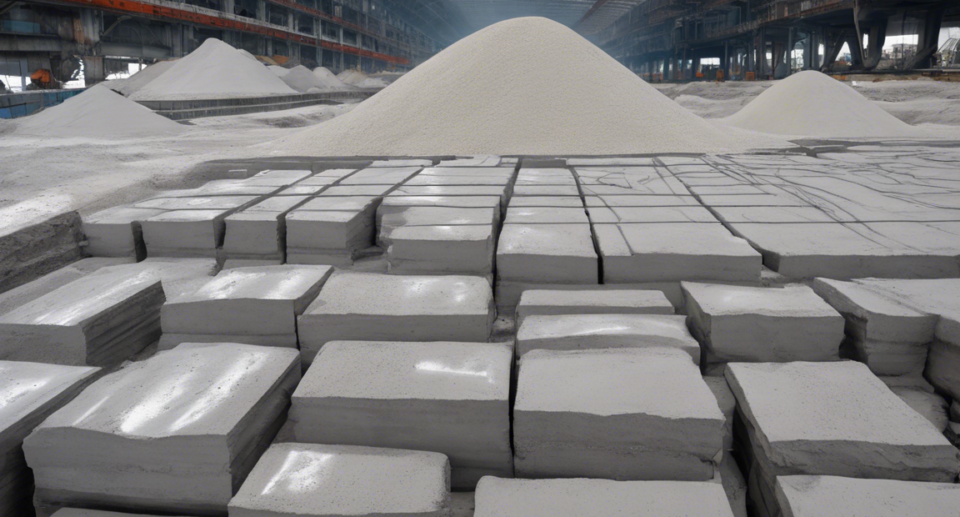Analyzing Asian Concretes And Cements Share Price Trends

In the world of investing, the Asian concretes and cements sector has garnered significant interest due to the rapid urbanization and infrastructure developments across the region. As construction activities continue to rise, so does the demand for concrete and cement products. As an investor, understanding the share price trends within this sector is crucial for making informed decisions. In this comprehensive analysis, we will delve into the factors influencing Asian concretes and cements share prices, common trends, and how investors can interpret and utilize this information.
Factors Influencing Asian Concretes and Cements Share Prices
Economic Growth and Infrastructure Development
- Economic factors play a pivotal role in the performance of Asian concretes and cements companies. Countries experiencing robust economic growth often witness a surge in construction activities, boosting the demand for concrete and cement products.
- Infrastructure development projects, such as road construction, bridges, and housing developments, significantly impact the Asian concretes and cements sector. Investors should closely monitor government initiatives and spending on infrastructure to gauge the potential growth of companies within this sector.
Raw Material Costs
- The cost of raw materials, particularly cement and aggregates, directly impacts the profitability of Asian concretes and cements companies. Fluctuations in raw material prices can affect margins and, consequently, share prices.
- Investors should keep abreast of changes in raw material costs and assess how companies are managing these fluctuations to mitigate risks.
Regulatory Environment
- The regulatory environment plays a crucial role in shaping the operating conditions for Asian concretes and cements companies. Regulations related to environmental standards, permits for quarrying, and construction permits can influence business operations and expansion opportunities.
- Changes in regulations can affect production costs and timelines for projects, which, in turn, impact share prices.
Analyzing Asian Concretes and Cements Share Price Trends
Historical Performance
- Conducting a historical analysis of share prices can provide insights into the volatility and growth potential of Asian concretes and cements companies. Investors can identify recurring patterns and trends that may help predict future performance.
- Looking at long-term trends can help investors assess the overall stability and growth trajectory of companies within this sector.
Peer Comparison
- Comparing the share price performance of different Asian concretes and cements companies can offer valuable insights into relative strength and weaknesses. Analyzing industry peers can help investors identify top performers and laggards within the sector.
- Understanding how a company performs in comparison to its peers can aid in making more informed investment decisions.
Macroeconomic Indicators
- Keeping an eye on macroeconomic indicators such as GDP growth, inflation rates, and interest rates can provide a broader context for Asian concretes and cements share price trends.
- Investors should assess how these macroeconomic factors influence the overall demand for construction materials and infrastructure projects, which, in turn, impact share prices.
Interpreting Share Price Movements
Volume Analysis
- Analyzing trading volumes can help investors gauge the level of interest and activity in Asian concretes and cements stocks. A surge in trading volume may indicate a potential price movement, while low volumes could suggest a lack of investor confidence.
- Investors should pay attention to volume trends alongside price movements to validate the strength of a particular trend.
Technical Analysis
- Utilizing technical analysis tools and indicators can provide further insights into Asian concretes and cements share price trends. Chart patterns, moving averages, and relative strength indicators can help investors identify potential entry and exit points.
- Investors can use technical analysis to complement fundamental analysis and make more informed decisions based on price patterns and market signals.
News and Events
- Market news and industry events can have a significant impact on Asian concretes and cements share prices. Announcements related to new infrastructure projects, mergers, acquisitions, or regulatory changes can trigger price movements.
- Staying informed about key developments within the industry can help investors anticipate potential market reactions and adjust their investment strategies accordingly.
FAQs (Frequently Asked Questions)
1. How do macroeconomic factors influence Asian concretes and cements share prices?
- Macroeconomic factors such as GDP growth, interest rates, and inflation can impact the demand for construction materials and infrastructure projects, subsequently influencing share prices in the sector.
2. Why is it essential to monitor raw material costs for Asian concretes and cements companies?
- Fluctuations in raw material costs, particularly cement and aggregates, can directly affect the profitability and margins of companies in this sector, ultimately impacting share prices.
3. How can investors use technical analysis in analyzing Asian concretes and cements share prices?
- Technical analysis tools such as chart patterns, moving averages, and relative strength indicators can help investors identify trends and potential entry and exit points in Asian concretes and cements stocks.
4. What role does infrastructure development play in shaping share price trends in the Asian concretes and cements sector?
- Infrastructure development projects contribute to the demand for concrete and cement products, making it a crucial factor influencing share prices within the Asian concretes and cements sector.
5. How do news and events impact Asian concretes and cements share prices?
- Market news and industry events, such as new project announcements and regulatory changes, can trigger price movements in Asian concretes and cements stocks as investors react to relevant developments.
Conclusion
Analyzing Asian concretes and cements share price trends requires a holistic approach, considering factors such as economic growth, raw material costs, regulatory environment, and macroeconomic indicators. By delving into historical performance, conducting peer comparisons, and interpreting share price movements, investors can make informed decisions within this dynamic sector. Utilizing technical analysis, monitoring news and events, and staying abreast of industry developments are key strategies for navigating the complexities of Asian concretes and cements investing.




